Developing an Online Tool to Promote Safe Sun Behaviors With Young Teenagers as Co-researchers
- PMID: 34713099
- PMCID: PMC8521794
- DOI: 10.3389/fdgth.2021.626606
Developing an Online Tool to Promote Safe Sun Behaviors With Young Teenagers as Co-researchers
Abstract
Despite education about the risks of excessive sun exposure, teenagers in Australia are sun-seeking, with sunburn common in summer. Conversely, some regular (time-limited) exposure to sunlight (that avoids sunburn) is necessary for vitamin D and healthy bones and other molecules important for immune and metabolic health. New interventions are thus required to better support teenagers to make healthy and balanced decisions about their sun behaviors. This paper describes the development of a prototype online tool-a smartphone app-that aimed to foster safe sun practices in teenagers. We recruited young adolescents (aged 12-13 years, n = 24) as "co-researchers" to provide ongoing input into the nature and design of the online tool. This age group was selected, as it is a critical time when young people transition from primary education, where "SunSmart" behaviors are entrenched in Australian schools, to high school, where risky behaviors emerge. Through a series of interviews and workshops, we codesigned an Apple iOS smartphone app with the co-researchers, leading health promotion professionals, researchers, and app designers. The developed app, Sun Safe, contains educational content relevant to teenagers about safe sun behaviors, complemented by other features requested by co-researchers and stakeholders to help engage young people, including gamified quizzes to test their sun health knowledge, real-time weather data on the UV Index and temperature, a sunscreen application timer, and reminders to check the UV Index. The developed prototype app was rated well by co-researchers, suggesting it is suitable for further feasibility and efficacy testing as an intervention tool to improve knowledge and promote safe sun behaviors by young adolescents.
Keywords: app development; co-researchers; health promotion; online tool; skin cancer; sun exposure; teenagers; vitamin D.
Copyright © 2021 Nguyen, Clare, Gamage, Alvares, Black, Hart, Lucas, Strickland, Jaimangal, White and Gorman.
Conflict of interest statement
MJ was employed by Curve Tomorrow. JW was employed by Reach Health Promotion Innovations. The remaining authors declare that the research was conducted in the absence of any commercial or financial relationships that could be construed as a potential conflict of interest.
Figures
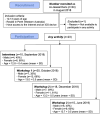

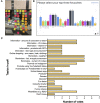
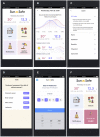

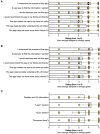
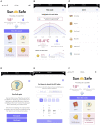
Similar articles
-
The Effects of Using the Sun Safe App on Sun Health Knowledge and Behaviors of Young Teenagers: Results of Pilot Intervention Studies.JMIR Dermatol. 2022 Mar 16;5(1):e35137. doi: 10.2196/35137. JMIR Dermatol. 2022. PMID: 37632872 Free PMC article.
-
A Gender Lens on User Quality Ratings From Young Teenagers Assessing the Sun Safe App: Comparing Responses From Co-researchers and Participants of Pilot Intervention Studies.JMIR Dermatol. 2022 Aug 18;5(3):e35203. doi: 10.2196/35203. JMIR Dermatol. 2022. PMID: 39475809 Free PMC article. No abstract available.
-
A Mobile Technology Intervention With Ultraviolet Radiation Dosimeters and Smartphone Apps for Skin Cancer Prevention in Young Adults: Randomized Controlled Trial.JMIR Mhealth Uhealth. 2018 Nov 28;6(11):e199. doi: 10.2196/mhealth.9854. JMIR Mhealth Uhealth. 2018. PMID: 30487115 Free PMC article.
-
Ultraviolet radiation: a hazard to children and adolescents.Pediatrics. 2011 Mar;127(3):e791-817. doi: 10.1542/peds.2010-3502. Epub 2011 Feb 28. Pediatrics. 2011. PMID: 21357345 Review.
-
Using behavioral economics to promote healthy behavior toward sun exposure in adolescents and young adults.Prev Med. 2015 Dec;81:184-8. doi: 10.1016/j.ypmed.2015.08.025. Epub 2015 Sep 9. Prev Med. 2015. PMID: 26361753 Review.
Cited by
-
Sun-health behaviours and attitudes towards sun safety amongst Australian teenagers: a qualitative update.BMC Res Notes. 2021 Sep 8;14(1):349. doi: 10.1186/s13104-021-05764-9. BMC Res Notes. 2021. PMID: 34496962 Free PMC article.
-
The Effects of Using the Sun Safe App on Sun Health Knowledge and Behaviors of Young Teenagers: Results of Pilot Intervention Studies.JMIR Dermatol. 2022 Mar 16;5(1):e35137. doi: 10.2196/35137. JMIR Dermatol. 2022. PMID: 37632872 Free PMC article.
-
Retention and Evaluation of Precision and Generic Prevention Materials for Melanoma: A Qualitative Study Comparing Young Adults and Adults.Cancer Prev Res (Phila). 2022 Aug 1;15(8):533-542. doi: 10.1158/1940-6207.CAPR-22-0033. Cancer Prev Res (Phila). 2022. PMID: 35665800 Free PMC article. Clinical Trial.
-
The Role of Health Literacy in Skin Cancer Preventative Behavior and Implications for Intervention: A Systematic Review.J Prev (2022). 2024 Dec;45(6):957-972. doi: 10.1007/s10935-024-00795-x. Epub 2024 Aug 7. J Prev (2022). 2024. PMID: 39110380
-
A Gender Lens on User Quality Ratings From Young Teenagers Assessing the Sun Safe App: Comparing Responses From Co-researchers and Participants of Pilot Intervention Studies.JMIR Dermatol. 2022 Aug 18;5(3):e35203. doi: 10.2196/35203. JMIR Dermatol. 2022. PMID: 39475809 Free PMC article. No abstract available.
References
-
- Volkov A, Dobbinson S. National Sun Protection Survey Report 2. Sun protection behaviours and sunburn incidence over summer weekends among Australians in summer 2013–14. Melbourne, VIC: Cancer Council Victoria; (2014).
-
- Australian Institute of Health and Welfare . Cancer in Australia 2017. Canberra, ACT: Australian Institute of Health and Welfare; (2017).
LinkOut - more resources
Full Text Sources

